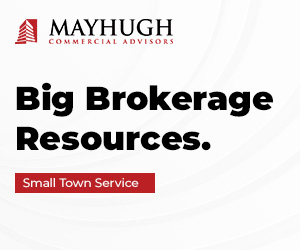

Leveraging Market Vulnerabilities
SUITE TALK July 3, 2025 admin

Others may believe that the market is “frozen” due to the current debt climate and economic environment. However, by dissecting the idiosyncrasies and nuances of the commercial real estate market, I’m able to utilize executive tactical strategies to successfully navigate today’s market. Here are a few winning tools:
Sellers, now is an excellent time to sell! Currently, there is extremely limited competition in the market for high-quality commercial retail properties. In Southwest Florida, investment appetite is booming due to the combination of leading migration levels supplemented by snowbirds and remote-worker relocations. Moreover, the water, weather, moderate cost of living and income tax-friendly environment have made SWFL a haven for investors seeking new capital and for those redeploying from higher-tax northern states.
There is currently a perfect storm of supply and demand imbalance that consistently delivers cap rate compression for savvy sellers in today’s market. In fact, the last two shopping centers I sold in SWFL had cap rates of 6.66% and 6.71%, yielding a total of $22 million. My strategy focuses on generating multiple offers, making this climate ideal for sellers seeking top dollar for their retail properties.
WE REPRESENT BUYERS USING ONE OF THREE METHODS.
One: If the investor possesses the liquidity, purchase all cash and then finance when interest rates decrease significantly, anticipated within the next 18 months.
Two: Use low leverage for less than 50% loan-to-value with language to allow for refinance within the first 24 months without a loan payoff prepayment penalty. This will ensure a sizeable cash flow after debt service for the purchaser.
Three: Most investors have preferred banking relationships with the financial institution that holds liquid capital for that principal. It can be as simple as asking for a favor. In this case, our clients secure a short-term loan at the minimum debt service coverage ratio with interest-only payments for the first 24 months and the ability to refinance without a prepayment penalty. When asked respectfully, lenders often agree to this type of relationship loan.
Using all three methods, we pair the offer with an authored dissertation that includes proof of funds, a schedule of real estate owned, a brief bio, a successful track record and a thorough synopsis of the offered asset. This will highlight the property negatives, specify that the buyer has invested the requisite time into this property investigation and clarify these factors have been accounted for in the offer pricing, ensuring they will not be used for future pricing reductions.
Using one of these strategies, I successfully negotiate incredible discounts that are often a 50 to 100 basis point, or 10 to 15%, price reduction for buyers. Sellers are currently prioritizing performance and assurance of close over maximum pricing with the theory of “What value does a higher price have if the sale doesn’t occur and the buyer fails to perform?”
These are just a few strategies I use to deliver the best outcomes for my valued clients. They’re also why 85%+ of my closed transactions are with repeat, long-term clients.
Jim Shiebler, CCIM, is a senior vice president with CBRE Institutional Properties, specializing in the investment sales of multi-tenant shopping centers and single-tenant net-leased properties. He directs an elite CBRE team and has represented $875M+ in closed transactions, closed in 20 states and closed on over 2,500,000sf. Contact Jim at Jim.Shiebler@cbre.com or call 239-421-8880.








